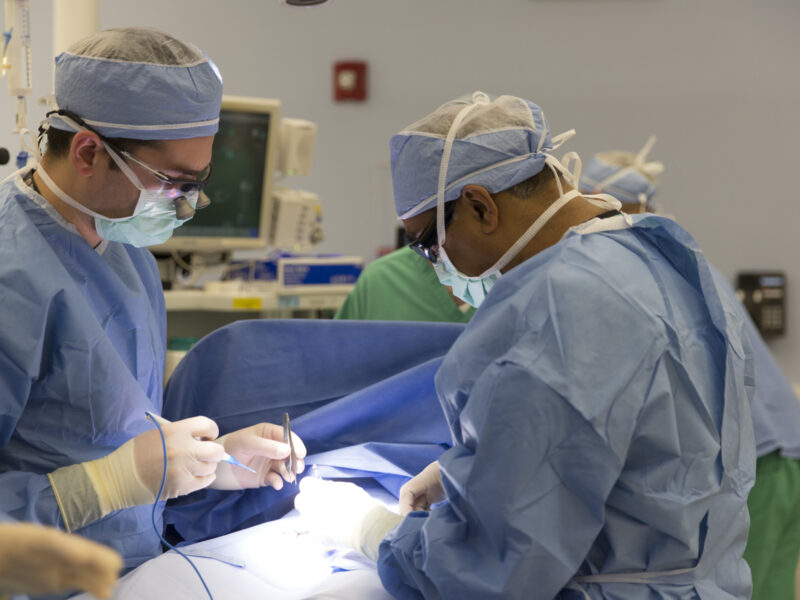A Novel Approach to Pediatric Fecal and Urinary Incontinence
A Novel Approach to Pediatric Fecal and Urinary Incontinence https://pediatricsnationwide.org/wp-content/themes/corpus/images/empty/thumbnail.jpg 150 150 Jeb Phillips Jeb Phillips https://pediatricsnationwide.org/wp-content/uploads/2021/03/Jeb-Phillips.jpg- April 28, 2016
- Jeb Phillips
A 9-year-old girl with caudal regression syndrome is the first child in the United States to be treated with pudendal nerve stimulation.
Neuromodulation of the sacral nerve, or sacral nerve stimulation, is rarely but increasingly used in children to help control fecal and urinary incontinence when standard medical management has failed. The treatment involves the implantation of a device that sends mild electrical impulses through a wire to sacral nerves which control bladder and anorectal function.
Patients with caudal regression syndrome may be missing all or part of the sacrum, however, making conventional sacral nerve stimulation impossible. That was the situation for a 9-year-old patient who had a history of refractory bowel/bladder dysfunction and came to Nationwide Children’s Hospital seeking treatment in 2015. She had dysgenesis of the sacrum below the S2 vertebra, ruling her out as a sacral nerve stimulation candidate.
After further testing, however, she was found to have function in the pudendal nerve, which is also involved with bladder and bowel control. That gave Seth A. Alpert, MD, pediatric urologist and co-director of the Surgical Neuromodulation Center at Nationwide Children’s, an idea. He knew of pudendal nerve stimulation treatments used elsewhere on adults with refractory bladder dysfunction and chronic pelvic pain.
Could he adapt the procedure to help this 9-year-old?
“No one that we are aware of has done this in a pediatric age patient in the United States,” Dr. Alpert explains. “It uses the same technology as sacral nerve stimulation, but placement of the wire for the device is much more technically challenging in pudendal nerve stimulation. I felt that even someone with sacral nerve stimulation experience would need additional training in order to do it correctly.”
So Dr. Alpert and three others from the Nationwide Children’s neuromodulation team traveled to Michigan to observe Kenneth M. Peters, MD, perform pudendal nerve stimulator implantation procedures on several adults. Dr. Peters, chief of Urology at Beaumont Hospital in Royal Oak, pioneered the use of pudendal nerve treatment in the United States.
Back at Nationwide Children’s, Dr. Alpert and the team completed the two-phase procedure. The first surgery was placement of the subcutaneous wire with the assistance of real-time nerve electromyography monitoring and a trial of nerve stimulation with an external impulse generator.
A few weeks later, the permanent implantable impulse generator was placed under the skin of the upper buttock. The 9-year-old, who was having daily fecal accidents before the procedure, is now able to wear regular underwear and participate in sports, especially her favorite activity of basketball. Her fecal incontinence has essentially resolved.
“Although very few children will be candidates for this particular procedure, we are ideally positioned to offer unique therapies to patients with the most complicated bowel and bladder abnormalities in the Center for Colorectal and Pelvic Reconstruction,” Dr. Alpert says.
References:
- Schober M, Ching C, Peters K, Alpert SA. Novel use of pudendal neuromodulation in a pediatric patient with caudal regression and partial sacral agenesis for refractory bowel bladder dysfuntion. Urology. In press.
- Pudendal Nerve Stimulation Case Study
About the author
Jeb is the Managing Editor, Executive Communications, in the Department of Marketing and Public Relations at Nationwide Children's Hospital. He contributes feature stories and research news to PediatricsOnline, the hospital’s electronic newsletter for physicians and other health care providers, and to Pediatrics Nationwide. He has served as a communications specialist at the Center for Injury Research and Policy at The Research Institute and came to Nationwide Children’s after 14-year career as daily newspaper reporter, most recently at The Columbus Dispatch.
-
Jeb Phillipshttps://pediatricsnationwide.org/author/jeb-phillips/October 13, 2015
-
Jeb Phillipshttps://pediatricsnationwide.org/author/jeb-phillips/
-
Jeb Phillipshttps://pediatricsnationwide.org/author/jeb-phillips/November 24, 2015
-
Jeb Phillipshttps://pediatricsnationwide.org/author/jeb-phillips/January 19, 2016







